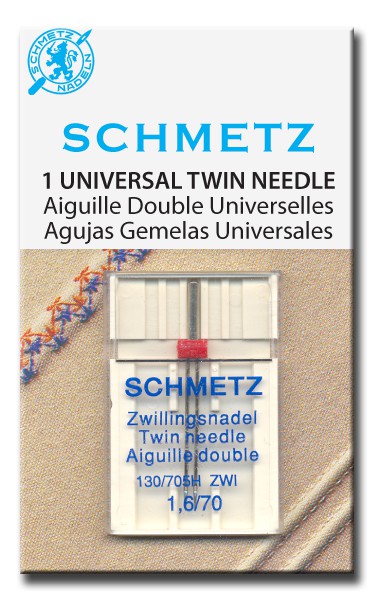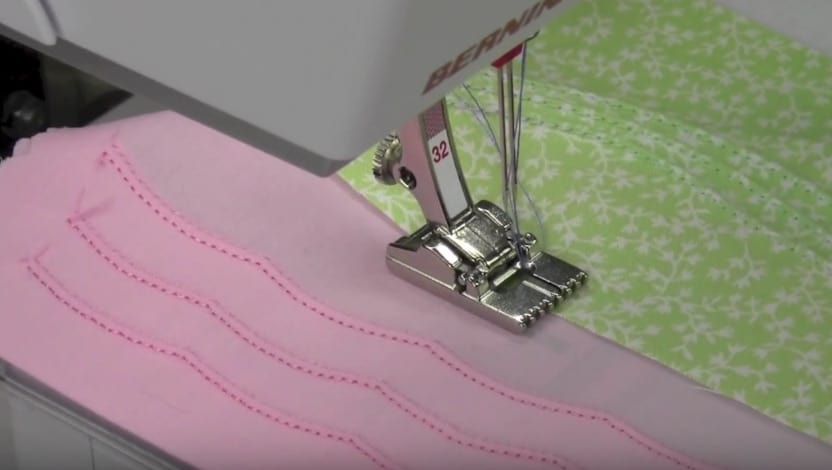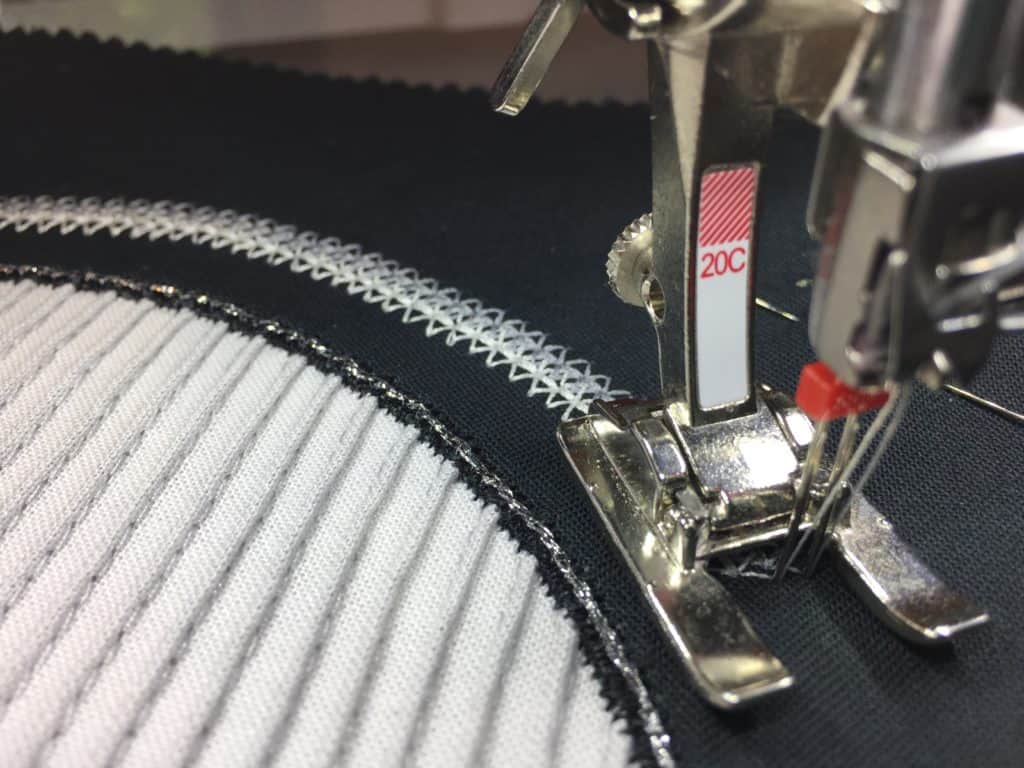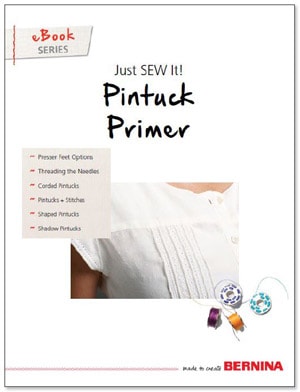
Can I Use A Double Needle with My Sewing Machine?
This is a very frequent question that we get asked at Heirloom Creations.
The answer is YES, if your sewing machine can sew both a straight stitch AND a zig-zag stitch. If a sewing machine can only straight stitch, a double needle can not be used.
What Sizes Do Double Needles Come In?
Double needles are measured with two numbers. The first number is the distance between the two needles measured in metric such as 1.8mm, 2.0mm, 2.5mm, 3.0mm, 4.0mm, 6.0mm, and 8.0mm. The second number is the size of both the needles: size 80 or size 90. Put together on the packages they will read: 2.0/80. This would be a double needle that is 2 millimeters wide and each needle is a size 80.
What is the Difference Between a Double Needle & a Twin Needle?
The term “double needle” and “twin needle” are used interchangeably. They are the exact same thing. 🙂
What are Double Needles Used For?
Double needles can be used for creating pintucks, parallel rows of topstitching, a simulation of a coverstitch hem (found on T-Shirt hems) and decorative stitches. It can also be used with free motion quilting. The distinct look of a zig- zag on the back is formed as the single bobbin thread links with both top threads.
Threading the sewing machine with two threads is just like threading the machine with one thread. Some sewing machines machines have two thread tension disks to separate the two threads for proper tension. Tension settings should remain normal if using regular sewing thread. Check the manual for double needle or twin needle threading directions.

Pintucks are found on sheer, light weight fabrics and knits and are stitched on a single fabric layer with a pintuck foot. To run additional parallel rows, align the previous pintuck in one of the foot’s left or right grooves and sew another row. Since the fabric draws up to form the tuck, be sure to create the pintucks and THAN cut out the pattern.
To simulate a coverstitch hem found on store bought clothing, use a 4.0 or wider double needle. Check what the maximum stitch width of your sewing machine before buying a wider double needle. Stitching from the top side, position the raw edge of the hem directly underneath and between the two needles. This set up will allow the raw edge to be incased by the zig-zag on the reverse side.
Decorative stitches can take on a whole new look when using a double needle. Try different color combinations and variegated threads for unique looks. But wait! When doing any stitch other than a straight stitch, you must, you must, you must adjust the stitch width! Look to see what the maximum stitch width is of the machine and write the number down. (5.0mm? 7.0mm? 9.0mm?) Check the double needle package and write down the size (2.0mm? 4.0mm?). To set the machine so not to break the double needle subtract these two numbers: the maximum sewing machine width “ double needle size = the stitch width for using the double needle. Double check the stitch width EACH TIME a new decorative stitch is selected. Sometimes I even hand turn the machine through the first couple stitches to be absolutely sure the needle will not swing to wide and hit the edge of the foot.

Some of the newer computerized sewing machines will have a double needle limitation function to help narrow down the stitch width. Check the manual to locate this function and note how wide a double needle it is pre-programmed for.
When stitching decorative stitches (my favorite use for a double needle) select stitches that are more open and flowing. Some heavily stitched stitches may pile up when using a double needle. Test out the stitch with stabilizer to know for sure. Who knows, you might find a new favorite stitch!
For more information on Pintucks, download this FREE Pintuck Primer e-book.




